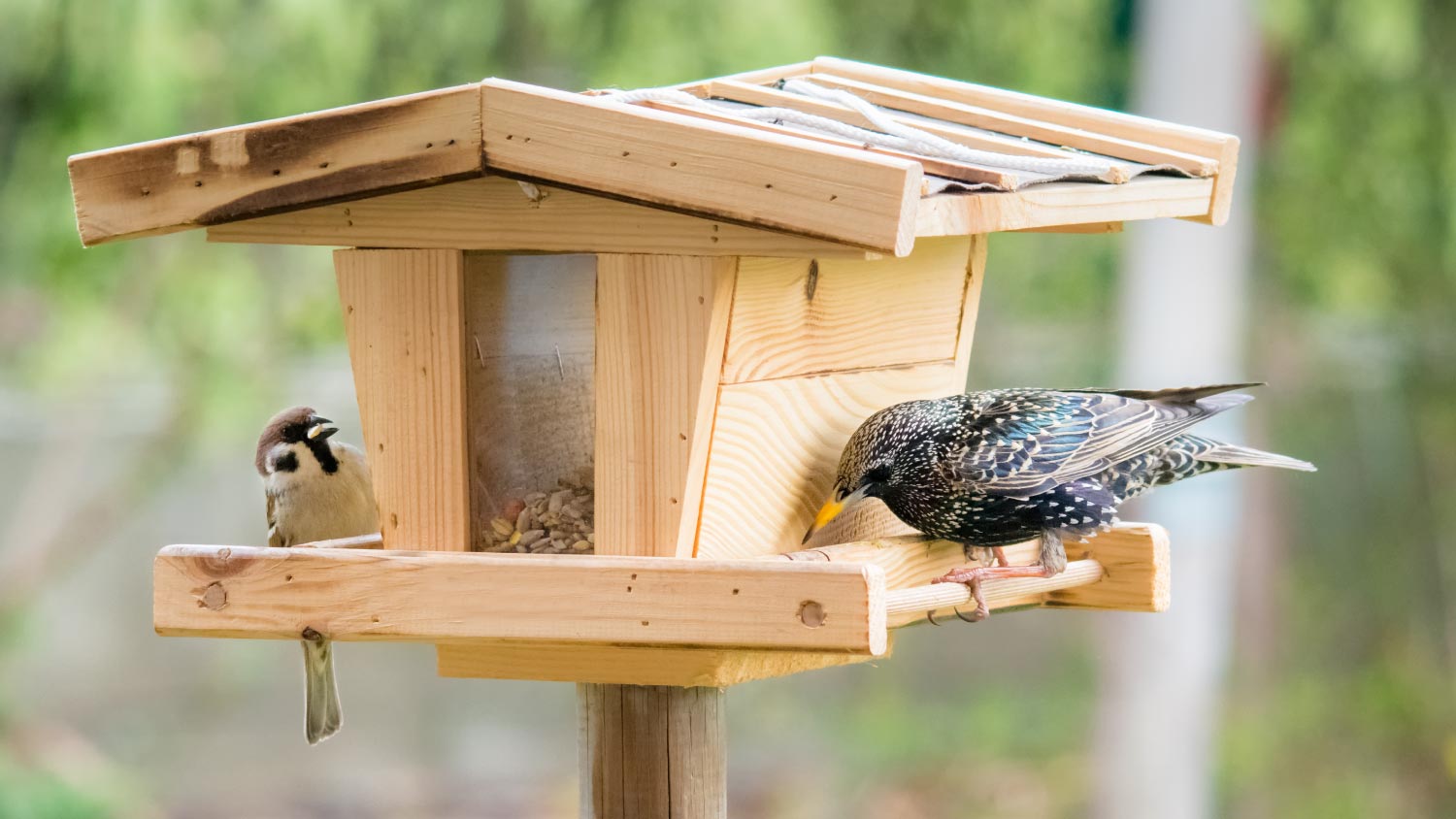
Leveling your yard can help with drainage and prevent damage to your home. Learn the cost to level a yard and what factors can affect the price.
With fragrant florals and careful hardscaping, your backyard can be a haven of calm


Life can be stressful—but your garden doesn’t have to be. Enter: the tranquility garden. Tranquility gardens are like self-made sanctuaries, places that shield you from the hustle and bustle of daily life and help you unwind. Let’s be honest, we all could use a break, and certain tricks can make your outdoor space extra-serene. Whether you’re looking to create a meditation spot or just a relaxing place to sip your morning coffee, here’s how to create a tranquility garden.
Peace and calm are all about shifting your mindset, which is why your tranquility garden should have a clear entrance. Think of it as a front door. Once you walk inside, you can leave the stress of work behind. Creating a threshold is as simple as a well-placed arbor or gate. The idea is to section the garden off from the rest of your property. This is the space for calm.
Water features are a common garden accent in tranquility gardens, especially Japanese-inspired gardens. There are a couple benefits. The sound of water is always relaxing, and water features are surprisingly versatile. There’s one for every budget and space.
If you have a small garden, reach for a small fountain. Small fountains are also budget-friendly (especially if you DIY it). For something more extensive, you’ll probably want to hire a local fountain installer. For big spaces, adding a pond or waterfall can make a huge difference.
The best way to stoke a sense of calm is simplicity. Your tranquility garden should have order. Instead of planting a ton of different florals, try planting large sections of the same plant. When in doubt, reach for less and use symmetrical, eye-pleasing concepts—like lines of perfectly-spaced ornamental grass or neat and tidy topiary. Regular plant pruning can help keep your garden in order and maintain a sense of calm.
Want to add an extra layer of calm? Don’t just relax your eyes. Relax your nose too. Choose fragrant florals, keeping basic aromatherapy practices in mind. For example, lavender can have a calming effect. Citrus is said to aid in meditation. Rose can uplift your mood. Gardenias are a low-maintenance option. Don’t know where to start? Take a walk around your local top-rated nursery and see how the scents of different flowers make you feel.

There are a lot of ways you can add color to your landscape. For tranquility gardens, choose a calming color palette. Colors like red, yellow, and orange tend to energize. Instead, choose washed-out cool tones. Incorporate lots of green shrubs along with pastel shades of:
Purple (Lavender, Salvia, Wisteria)
Blue (Hydrangea, Bluebird, certain succulents)
Silver (Artemisia, Japanese Painted Fern, Eucalyptus)
For an extra sense of peace, play with the idea of monochrome. Lump similar colors together to help your eye relax.
Create a peaceful, multi-use garden design by including two types of seating:
An area where you can entertain
An area for solo meditation
Set aside some seating beneath a pergola or in a gazebo to create an area for company. Carving out space for a patio can also help create a threshold, defining the barriers of your relaxing space. For meditation, choose a secluded spot. Perhaps it’s a small bench off a winding stone path or a corner of walled seating shrouded by shrubs.
Japanese dry gardens (also known as Zen rock gardens and Japanese rock gardens) often inspire tranquility or meditation gardens. This type of garden design, which rose to popularity during Japan’s Muromachi Period in the 14th and 15th centuries, was specifically created to aid in meditation. It includes elements like:
Moss
Carefully arranged stones
Gravel raked in a pattern that mimics water
To get the look, carve out a small area of your tranquility garden and fill it with gravel. Keep the border crisp (whether lined with shrubs or ornamental grasses). Carefully scatter large stones around the garden, add a little green with patches of moss, and rake the gravel in swirls around them to mimic a flowering river.

There are few things more peaceful than chirping birds, so why not tune into nature and attract them to your tranquility garden? Add elements like:
Bird feeders
Birdbaths
Birdhouses
In particular, birds prefer shallow water features with clean water (meaning you will have to regularly replace the water if it isn’t running). As long as you create an environment that’s inviting to birds, they will come.
Ornamental trees and shrubs can introduce a unique texture into your garden and make it feel like an entirely new landscape—especially if they’re different from the rest of the vegetation in your backyard. It goes along with the idea of creating somewhere you can leave stress behind. This is a break from your everyday life.
There are a ton of unique plants that will set your garden apart, but many gardeners reach for trees common in Zen gardens, like:
Hakonechloa, an ornamental grass
Ferns
Cherry trees
Japanese maples
Black pines
Styrax
Other gardeners find calm in symmetry, opting for perfectly manicured boxwoods.
From average costs to expert advice, get all the answers you need to get your job done.

Leveling your yard can help with drainage and prevent damage to your home. Learn the cost to level a yard and what factors can affect the price.

Leveling your yard can help with drainage and prevent damage to your home. Learn the cost to level a yard in Columbus, OH, and what factors can affect the price.

A landscape designer can elevate your outdoor space and bring your vision to life. Use this landscape design cost guide to budget for your next project.

What is a privet hedge and why should you consider it for your backyard? Use this guide to consider the pros and cons along with upkeep and maintenance tips.

It isn’t immediately obvious who to hire when you need to regrade your yard. Here are the contractors perfect for this critical home project.

If you’re trying to prevent erosion in your yard, riprap might be the right material for your project. So, what is riprap, exactly? Let’s walk through it.